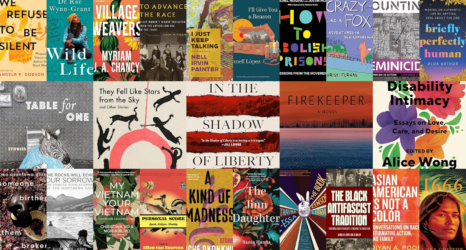In 1978, I went to England on sabbatical to finish writing a book. I shipped two boxes of books from California to Cambridge, heavy tomes about Shakespeare and the Renaissance. The boxes remained unopened while I read and re-read a Bantam paperback of Doris Lessing’s The Golden Notebook, read it so voraciously that the cover flaked off and the pages fell out. I came back with an article on The Golden Notebook that became the centerpiece of a book on contemporary women’s fiction.
It would be difficult to overstate the impact The Golden Notebook had on women of my generation, the direct and immediate identification we felt with it, the thrill of recognition. Here was a protagonist struggling with commitments to herself, her work, a child, relationships, political activism, “living the kind of life women never lived before.” Protagonist Anna Wulf describes herself as “the position of women in our time,” and for many of us this was no exaggeration.
I have read and heard dozens of testimonies by women about the transformative power of this novel: “The Golden Notebook changed my life,” “it made me a feminist,” “it’s the reason I went to graduate school,” “it’s why I wrote my first novel,” “I named my daughter Anna.” Whatever Doris Lessing’s disaffection with organized feminism, she helped raise the consciousness of a generation of women who went on to become teachers, writers, scholars, activists. This novel played a key role in the resurgence of feminism in the ’60s and ’70s.
Lessing, who died November 17 at age 94, was one of the most extraordinary writers of our time. Bursting in on a quiescent postwar literary scene with The Grass is Singing, her first novel dramatized connections between sex, race and class that hardly anyone was articulating in the early ’50s. At the beginning and end of the ’60s, her epic works The Golden Notebook and The Four-Gated City rendered the “ideological feel of our mid century,” as she put it, taking us from the Cold War through the social revolutions of the ’60s, the retrenchments of the ’70s and ’80s, and finally to Armageddon at the end of the century, when she moved “off into fantasy,” as she said. At the end of the ’60s, she was predicting ecological disaster in the poisoning of the planet, and in the early ’70s, in Memoirs of a Survivor, she was depicting the sort of devastated urban scene that has since become familiar in inner cities in the U.S. and Britain.
In her long and varied career, she took on the big themes: imperialism, the end of imperialism, the hope and failure of Communism, the threat of nuclear disaster and ecocide, madness, terrorism, freedom, faith, the role and responsibility of the artist. She was not afraid of bending the shape of the novel to explore complex ideas. Her fiction passed through dramatically different stages, from realism through postmodern, fantasy and space fiction and back to realism, in a way that occasionally lost her readers. When she felt trapped by readers’ expectations or by her own earlier practices, she simply sprang for a new identity, publishing two novels under the pseudonym Jane Somers, to see what it would be like to be “reviewed … as a new writer, without the benefit of a ‘name,’” hoping that this might “cheer up young writers, who often have such a hard time of it.”
A restless and prolific writer, always moving, testing, probing the limits of the possible and seeking new possibilities, her work does not yield easy generalizations. In her feminism, her politics, her narrative forms, she is impossible to “place”: At home neither on the left nor the right, an exile both actually and metaphorically, she defeats efforts of critics to claim her or categorize her. She insisted on the social responsibility of art at a time when it was unfashionable to do so, describing the novel as “an instrument of change.” The Golden Notebook is, like much of her fiction, an effort to get readers to imagine a better world, an “act of imagination” that Anna likens to an “act of faith”: “Yes,” says Anna, “because … if people can imagine something, there’ll come a time when we can achieve it.”
Lessing inspired a generation of women to imagine something better, to envision new possibilities for ourselves and the world. Such writers give hope that words can change the world.
Photo from Flickr user cdrummbks under license from Creative Commons 2.0
Gayle Greene is the author of Doris Lessing: The Poetics of Change and Changing the Story: Contemporary Women Writers and the Tradition. She co-edited three anthologies of literary criticism: Making a Difference: Feminist Literary Criticism; Changing Subjects: The Making of Feminist Literary Criticism; and The Woman’s Part: Feminist Criticism of Shakespeare. She has published widely in mainstream as well as academic venues.





